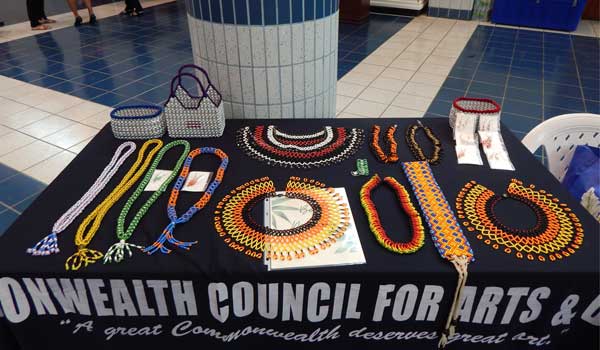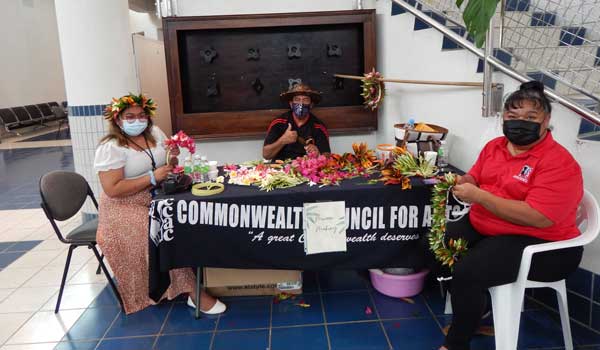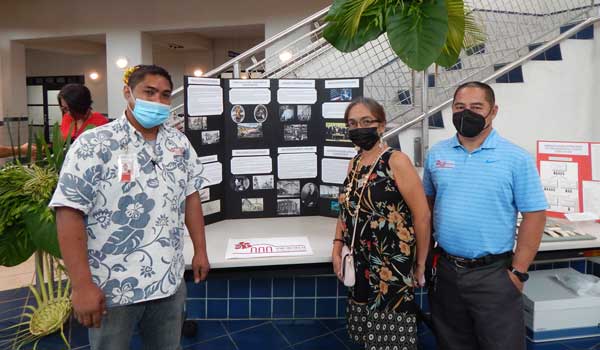CNMI Judiciary celebrates Commonwealth Cultural Day

John Castro, middle, and a colleague make rope using coconut fibers. Alongside the rope, also on display are traditionally made tools and a small-scale, carved wooden boat. (JOSHUA SANTOS)
Ahead of Commonwealth Cultural Day today, the CNMI Judiciary celebrated and showcased the CNMI’s culture last Friday with an event at the Guma Hustisia in Susupe. On Friday, visitors to the courthouse were treated to displays of traditionally-made arts and crafts and samples of local delicacies.
Justice John A. Manglona said the event was spearheaded by the Judiciary’s judicial assistants and that the event—which was the first of its kind at the Judiciary—will now be a yearly event moving forward. Manglona also highlighted the importance of celebrating the many nationalities and cultures present in the Judiciary’s staff and the CNMI as a whole.

Traditionally made and intricate beadwork are put on display at the Guma Hustisia last Friday as part of the CNMI Judiciary’s celebration and showcase of CNMI culture last Friday. (JOSHUA SANTOS)
“Today’s a beautiful day. It’s a celebration of cultures. We do not only recognize Carolinian and Chamorro cultures but [also] cultures of other countries. …Our staff is very diverse, [and] we’re proud to say that the Judiciary is made up of a diverse group of people,” said Manglona.

Members of the Commonwealth Council for Arts & Culture share a photo at their table where they demonstrated how to make mwaars, or decorative flower wreaths typically worn on the head. (JOSHUA SANTOS)
Chief Justice Alexandro C. Castro said it is important for everyone to occasionally look back and keep in touch with their cultures, adding that the CNMI’s judges, Guam’s judges, and other judges in the Micronesia region also discuss cultures and their identities during judicial conferences.

NMI Museum of History and Culture docent Archie Ajoste, leftmost, shares a photo with colleagues at the museum’s table last Friday during an event hosted by the CNMI Judiciary last Friday at the Guma Hustisia. (JOSHUA SANTOS)
“We have to know where we are today to know where we’re going tomorrow. You have to look back and ask yourself, ‘Where did I come from?’ and that’s culture. Culture is still thriving [in the CNMI] because we have not lost our identities,” said Castro.
Invited to participate in last Friday’s event at the courthouse were members of the Commonwealth Council for Arts & Culture and the NMI Museum of History and Culture.























